“A box-shaped house, such as the one advocated on this page, is always most economical of space. You can get more wall space, more room space, more actual ‘overhead’ than in a house that is oddly shaped.”
The April 1920 issue of the Delineator magazine features an article called “A Small Brick House.” It discusses the internal and outdoor decor of such a home, and here we can see the sketches of the outside of the house:
The article points out some of the benefits of living in a brick house:
“Think carefully, too, of the advantages of a brick house. Such a house is warm in Winter and cool in Summer. The initial cost may be a little larger than for a house built of wood but, in the long run, the economy effected by the brick house offsets this higher expense.
“For instance, the brick house does not need to be painted. Considering the high cost of both labor and paint, this is a real saving. Nor is the insurance rate so high, for the brick house is practically indestructible and therefore not in great danger from fire. The fact, too, that it is warmer in Winter, not only means added comfort but actually reduces the coal bills.”
Then the article moves into the inside portion of the house, and provides some ideas on how to decorate and furnish it. In the illustration at the top of this entry, we see the home’s living room. Here is a description of how that room has been decorated:
“In the living-room at the top of the page the furniture is treated in enameled ivory to give a restful effect of space.
Formal window draperies of old-blue velours, draw-curtains of a darker tone and glass-curtains of a light transparent material. Seat of Napoleonic influence in blue taffeta; woodwork, ivory white.
Oval table and end-tables in ivory with enameled green tops under glass. Stuffed chairs in blue and light gray: buff paneled walls and a black waxed floor.”
Now, we’ll move on to the bedroom:
“Woodwork of the bed, French walnut; dresser in white enamel outlined in walnut. Black carpet and two hand-made oval rugs.
Window-hangings and stuffed chairs are a light flowered chintz. Paneled walls finished in light silver-gray.”
And lastly, the dining room/staircase:
“Dining-room with black waxed floor and a plain carpeted mouse-colored rug – a striking contrast to the delicate buff finish of the paneled walls. Stairway has arrangement of pictures with brilliant color notes. Rug, hangings and upholstered chairs of a wisteria tone. Over the sideboard a decoration in somber wood.”
I really like the style of decor used in these rooms. The black accents are always a favorite of mine and I see them often in rooms from the late teens to early 1920′s. Here, I especially like how they are played off against bold but feminine shades of pink, blue, and chartreuse.
In this same April 1920 magazine issue, I found another ad where the home decor really caught my eye. It was in an ad for Congoleum Gold-Seal Art Rugs, and so many things about it look rather modern – the striped black and white chair, the leopard-patterned pillow, the bold colors of the flowers together in the vase. Here is a close-up of the interior of the room shown:
Below are thumbnails showing the entire pages as they appeared in the magazine.

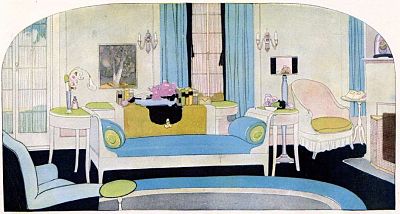
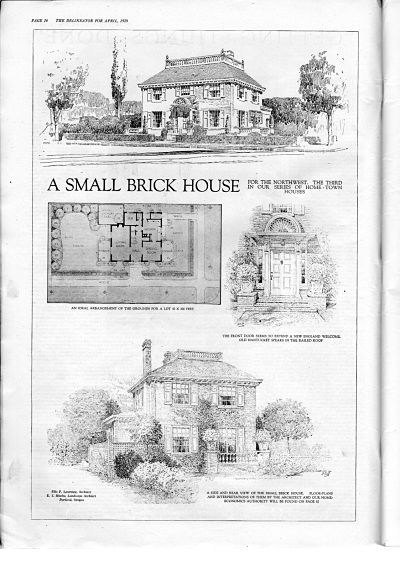
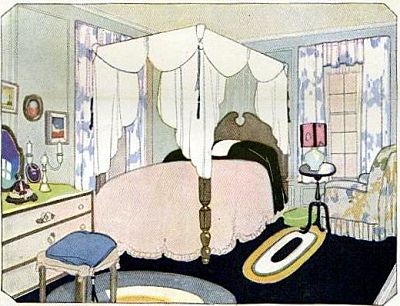
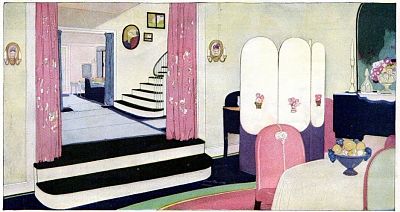
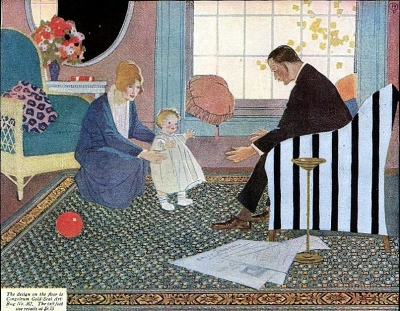
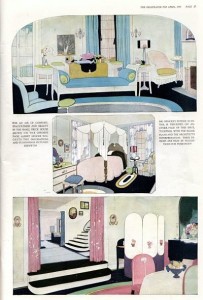
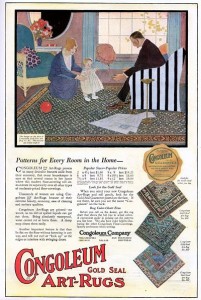


{ 0 comments… add one }